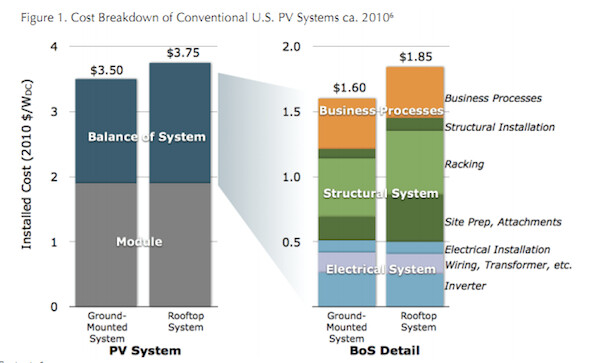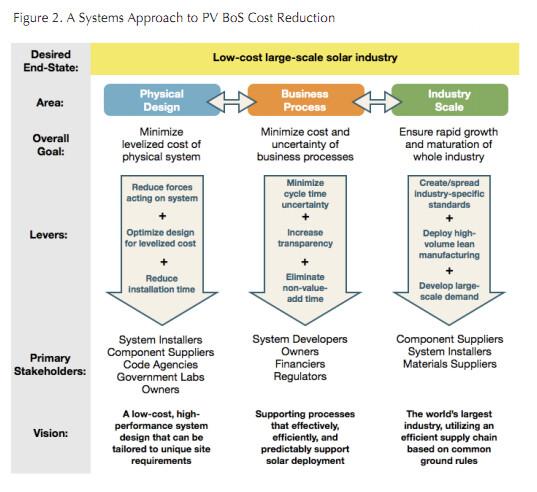In a previous Solar choice blog entry, we discussed the meaning of grid price parity (or grid parity) and why it is such an important goal in the solar power industry. In a nutshell, once solar power becomes price-competitive with other, conventional forms of power generation, then it will only be a matter of time before fossil fuels such as coal are phased out. A new report by the Colorado-based Rocky Mountain Institute (RMI) looks at speeding up solar’s trajectory toward grid parity by reducing Balance-of-System (BoS) costs–the costs associated with everything about the system besides the solar panels themselves.
RMI, a not-for-profit organisation that conducts research to develop and promote renewable energy sources, recently held a ‘charrette’ (an urban planning technique for consulting with all stakeholders) whose purpose was to identify specific ways in which BoS costs could be reduced rapidly and effectively in order to facilitate rapid uptake of solar photovoltaic (PV) power systems. The report points out that roughly half of the price of a solar power installation–currently about $3.75/Watt in the US for a roof-mounted system–can be attributed to BoS (see Figure 1). Indeed, barring a major, ‘game-changing’ breakthrough in the technological development or production of solar panels themselves, the most effective way to lower overall solar system costs is likely to be by reducing BoS costs.

Balance of System components are everything in a solar system except the solar modules themselves: inverters, wiring, and mounting brackets/racks (not included in RMI’s estimates are batteries for owners of stand-alone / off-grid systems). There are also a number of labour-related and procedural costs associated with installing a system identified in the RMI report: business processes, the actual structural installation, site preparation, and the electrical installation.
The task of tackling these diverse and disparate aspects of cost reduction is not a straightforward one, and will require a ‘systems approach’ that looks at the whole picture and incorporates the viewpoints and positions of equally disparate key players. There are many more of these players in aspects of BoS than in the solar power module industry; in fact, BoS is not a unified industry as such, and outside-the-box thinking will be required to smooth out inefficiencies in the industry.
The RMI charrette therefore recommends not just one policy direction to be taken, but instead a set of recommendations covering 4 areas in which to seek improvements in order to bring down costs. These are: focusing on physical system design, enabling and streamlining business processes, the scaling of industry, and the identification and realisation of available synergies by coordinating across boundaries (see Figure 2).

Some of the general key recommendations in the report are to promote the growth of the industry as a whole (in part by instituting industry-wide standards), to reduce costs and uncertainty, and to minimise the levelised costs of systems. If these aspects of the problem of BoS cost are approached effectively and on a broad scale, RMI sees great potential for cumulative cost reductions. Although such a high degree of success is certainly not guaranteed, if a concentrated effort is made and the recommendations are somehow implemented, RMI estimates that BoS costs may be reduced by up to 58% within the next 5 years.
Written by James Martin
Solar Choice Analyst
© 2011 Solar Choice Pty Ltd
Sources and Links:
Rocky Mountain Institute, “Achieving low-cost solar PV–executive summary” (pdf)
Renewableenergyworld.com, “Grid parity for PV with balance of system reductions”
Previous related Solar Choice blog entries: What is grid parity and what does it mean for solar power? : How to mount a solar array on your roof